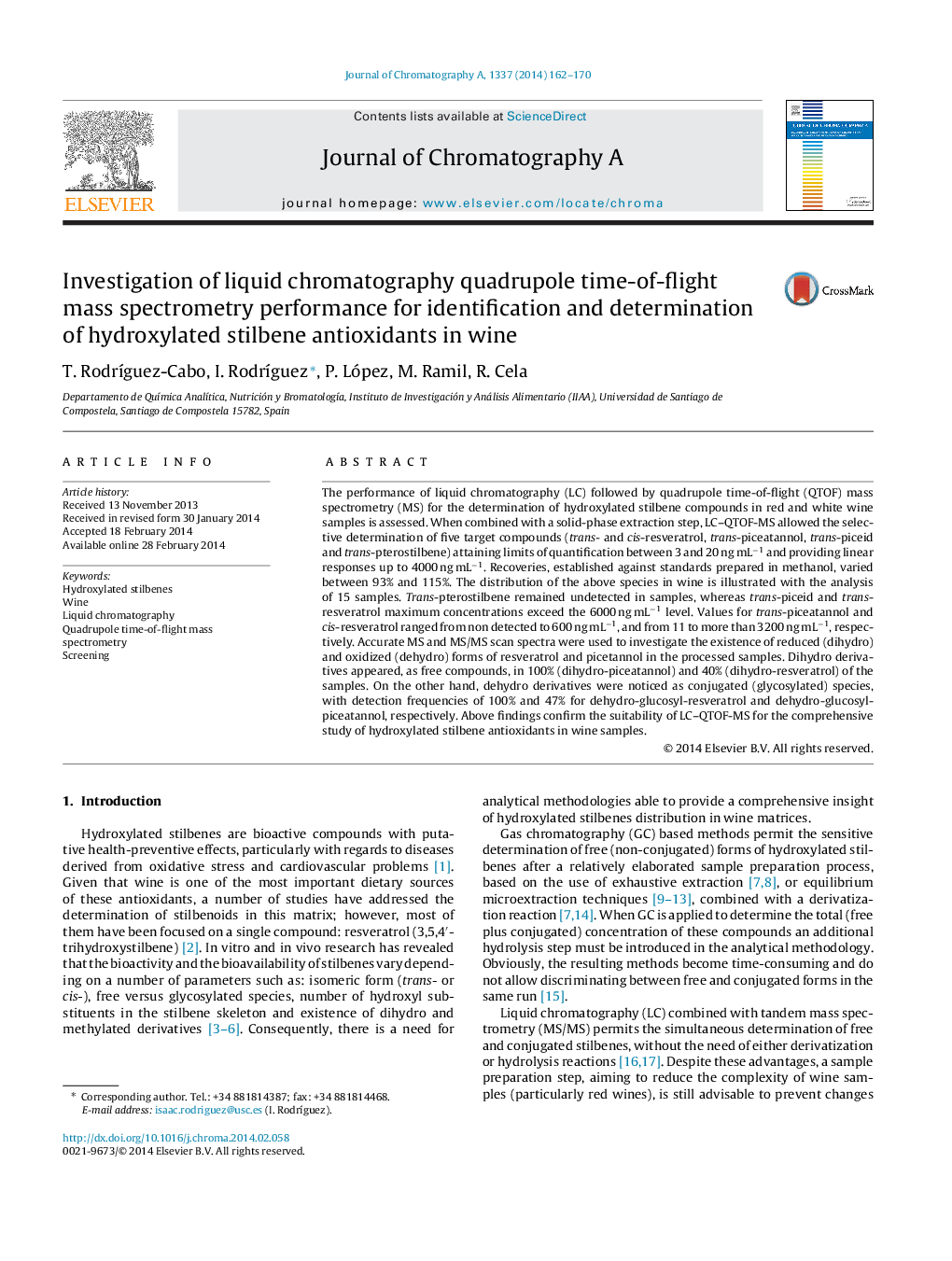| Article ID | Journal | Published Year | Pages | File Type |
|---|---|---|---|---|
| 7613588 | Journal of Chromatography A | 2014 | 9 Pages |
Abstract
The performance of liquid chromatography (LC) followed by quadrupole time-of-flight (QTOF) mass spectrometry (MS) for the determination of hydroxylated stilbene compounds in red and white wine samples is assessed. When combined with a solid-phase extraction step, LC-QTOF-MS allowed the selective determination of five target compounds (trans- and cis-resveratrol, trans-piceatannol, trans-piceid and trans-pterostilbene) attaining limits of quantification between 3 and 20 ng mLâ1 and providing linear responses up to 4000 ng mLâ1. Recoveries, established against standards prepared in methanol, varied between 93% and 115%. The distribution of the above species in wine is illustrated with the analysis of 15 samples. Trans-pterostilbene remained undetected in samples, whereas trans-piceid and trans-resveratrol maximum concentrations exceed the 6000 ng mLâ1 level. Values for trans-piceatannol and cis-resveratrol ranged from non detected to 600 ng mLâ1, and from 11 to more than 3200 ng mLâ1, respectively. Accurate MS and MS/MS scan spectra were used to investigate the existence of reduced (dihydro) and oxidized (dehydro) forms of resveratrol and picetannol in the processed samples. Dihydro derivatives appeared, as free compounds, in 100% (dihydro-piceatannol) and 40% (dihydro-resveratrol) of the samples. On the other hand, dehydro derivatives were noticed as conjugated (glycosylated) species, with detection frequencies of 100% and 47% for dehydro-glucosyl-resveratrol and dehydro-glucosyl-piceatannol, respectively. Above findings confirm the suitability of LC-QTOF-MS for the comprehensive study of hydroxylated stilbene antioxidants in wine samples.
Related Topics
Physical Sciences and Engineering
Chemistry
Analytical Chemistry
Authors
T. RodrÃguez-Cabo, I. RodrÃguez, P. López, M. Ramil, R. Cela,
